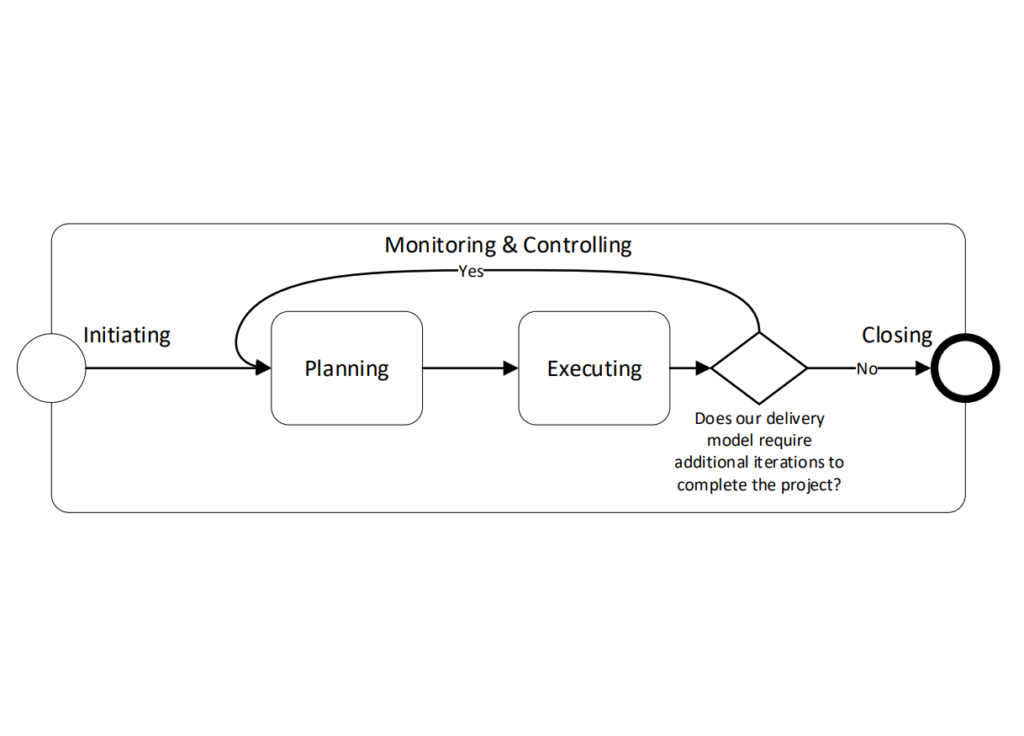Accountability, authority, and responsibility
All of the EEFs and OPAs influencing a project and the extent to which they influence the project is dependent on the organizational systems within the organization. In order to delivery the project successfully within this dependency, the project manager must understand how accountability, authority, and responsibility work within the organization. Without having various competencies to maneuver through the organization smoothly, the project manager will have a difficult time getting things done.
The interaction between management approaches, governance frameworks, and the organization’s structure will all determine what competencies and role someone should have in order to be effective within the organizational systems.
Getting theoretical with systems
I am reminded of Niklas Luhmann’s systems theory, which is an elaborate analysis of various systems including organizations. He would compare different structures with varying formality especially to understand each structure’s ability to adapt within the wider system that it exists. Every structure has its own attributes that enable it to understand itself in order to simplify its operations. A structure that becomes simpler allows objects within that structure to operate more effectively and efficiently.
Taking Luhmann’s theory and extending it to project management, depending on the formality of an organization, a project manager will understand the organization in a certain manner to know what they can or cannot do to get the project moving forward. If they are unaware of how the organization works or lack authority, they might not be in a good position to make any difference. Taking Luhmann’s theory even further, philosopher Jiddu Krishnamurti said, “To understand is to transform what is.” Practically speaking, a project manager’s effectiveness within an organization, especially at delivering results in the project they manage, is proof of their ability to understand that organization in order to drive change. Stepping back to Luhmann’s theory, the ability for the project manager to repeatedly effect change within the organization through repeated successful delivery makes that organization and its system much stronger and simpler over time.
Combining the above theories with the project management theory discussed in the PMBOK® Guide, we understand that systems are unique, they are complex and consist of various components and their associated functions, their complexity can be adjusted to enable efficiency, and they are dynamic enough that it is not simple to predict what the consequences would be in changing the system.
This reminds me of an “Internet of Things” (IoT) product I was working on, and I referred to this yaml sample on digital twins. Within a venue there is are spaces, and within a space there are devices, and within a device there are sensors. The sensors may communicate with an IoT hub that is tied to the venue itself, allowing the devices to all interact with one another depending on their attributes. Why is this important in understanding systems?
We can break down any object into smaller objects, and it is the way in which all of these objects and sub-objects interact that will determine the overall output of the highest level object. The same applies to an organization, its systems, the systems’ components, and the components’ functions. By understanding this, an organization can develop and maintain a governance framework that enables the organization and its various systems and sub-systems to operate in a more predictable manner.
Governance
Given that an organization and everything within it is managed to some degree, a closer look reveals that the degree and structure of management at each level allows the organization and its participants the ability to influence each other. By understanding people and process, project managers can understand what factors within the organization should be considered as well as the data that is required to be able to understand and maneuver through the organization to deliver change.
Governance is about authority and how it can be exercised within a particular context. An organizational governance framework is the context on how authority is exercised within an organization. A project governance framework is the context on how authority is exercised within a project.
By understanding all the various ways the organization can work through its governance framework, a project manager will be in a position to know how their project will be affected by the way in which the organization sets and achieves objectives, manages risk, and addresses performance. They can in turn determine the best governance framework for their individual project (or, in more complex settings, programs and portfolios).
Because of my interest in jurisprudence and legal practice generally, easily found in other places where I write, I find governance fascinating. While it is not incredibly critical to obtaining the PMP® certification, I am curious to know more about the four governance domains:
- Alignment,
- Risk,
- Performance, and
- Communications
each domain’s functions of:
- Oversight,
- Control,
- Integration, and
- Decision Making
and each function’s supporting processes and activities.
A project’s governance will depend on the organization’s structure, and there are many types:
- Organic or simple – usually a solo entrepreneur getting it all done or with other part-time contributors
- Functional or centralized – separate departments getting things done
- Multi-divisional – similar to functional, where each division has its collection of departments mirroring other divisions
- Matrix (strong, weak, and balanced) – organization with functional and project-level control over project management in various degrees, with a strong matrix being more like a project-oriented organization, and a weak matrix being more like a functional organization
- Project-oriented – one that is based on projects being delivered
- Virtual – centralized organization that outsources and networks with various other processes
- Hybrid – mixtures of other structures
- PMO – one with a department dedicated to project (or program or portfolio) management that has significant influence on how projects and more complex forms of work are managed; they can be supportive, controlling, or directive
Summary: Revisiting data privacy and political beliefs
As I mentioned earlier, the project manager (in this case) needs to maintain auditable records regarding amounts of personal data processed and how often political beliefs are referenced for the purpose of judging testing results.
Within the organization, which is a hybrid consisting of a functional structure with a PMO there are various systems such as departments within the project manager’s company including the project management office (PMO), legal, IT security, and compliance.
The PMO has its own processes which guide the project manager (PM) in knowing to connect with their legal, security, and compliance counterparts. Legal refers the PM to the organization’s legal knowledge base which informs them about the privacy legislation and how it is incorporated into contracts. Security refers the PM to the project-level controls that should be followed to implement the required auditability. Compliance refers the PM to other guidance and considerations they should follow at an organizational level.
Every three months, the compliance department requires all projects to report their compliance with various rules, policies, and procedures of the organization, and the PM will provide a report to this effect. At the organizational governance level in this example, the compliance department has the authority to compel the PM to provide those reports, and the PM lacks the authority to decline the compliance team’s request. As a result, the PM has set up their project governance framework to ensure all report details are regularly collated and generated into a report that can be smoothly sent to the compliance team.
Within the project itself, because of how it deals with personal data, the project governance framework also explains how change requests to the system in relation to personal data should be reviewed and approved. This was a recommendation provided by the legal team and turned into policy detail by the security team, which the PM has enshrined into the project’s management.
The story above briefly expresses the PM’s influence over both the organization and the project they manage based on how they work with the relevant OPAs and EFFs in the context of the organization and its systems.



